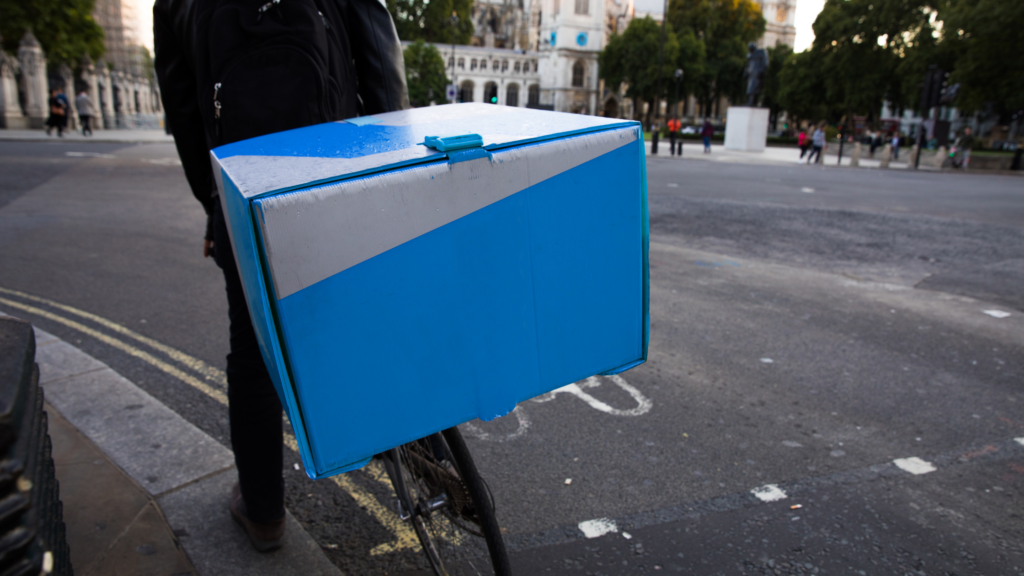Reducing Carbon Emissions in London's Logistics Industry: What We're Doing

The Current Carbon Emissions Landscape
London, a city known for its rich history, cultural diversity, and iconic landmarks, has also been grappling with a less glamorous issue: carbon emissions. As the world collectively faces the pressing challenge of climate change, Londoners have taken significant steps to reduce their carbon footprint and envision a greener, more sustainable future. In this blog, we will embark on a journey through the current state of carbon emissions in London, explore what the future of the city could look like, and delve into the expansion of the Ultra-Low Emission Zone (ULEZ) as a key step in combating climate change.
To understand London’s current carbon emissions situation, we must first acknowledge the extent of the challenge. London is one of the largest metropolitan areas in Europe and has a population of over 9.5 million people. This bustling metropolis, while offering endless opportunities, also generates significant carbon emissions primarily from transportation, buildings, and industry.
Transportation Emissions
Transportation remains one of the leading contributors to carbon emissions in London. The city’s reliance on diesel and petrol vehicles has led to poor air quality and increased greenhouse gas emissions. In an effort to combat this issue, London introduced the Congestion Charge Zone and later expanded it to the Ultra-Low Emission Zone (ULEZ), aimed at reducing emissions from vehicles by imposing fees on those that do not meet stringent emission standards.
Building Emissions
London’s skyline is dotted with skyscrapers and historic buildings, but many of these structures are not energy efficient. High energy consumption in buildings, primarily due to heating, cooling, and lighting, contributes significantly to the city’s carbon emissions. Retrofitting older buildings and implementing energy-efficient design standards for new constructions is crucial to reducing this carbon footprint.
Industrial Emissions
Industrial activities in London, while essential for the economy, also emit a substantial amount of carbon dioxide. Manufacturing processes, power generation, and waste management all contribute to the city’s carbon emissions. Transitioning to cleaner technologies and sustainable practices is imperative for tackling industrial emissions.
The Future of London: A Greener Vision
Now, let’s take a glimpse into what the future of London could look like in terms of carbon emissions. The city is on a transformative journey towards sustainability, with ambitious goals and strategies to combat climate change.
Electrified Transportation
London’s future transportation system will be dominated by electric vehicles (EVs) and improved public transportation. The government has set a target to ban the sale of new petrol and diesel cars by 2030. This shift towards EVs, coupled with investments in charging infrastructure, will drastically reduce emissions from the transportation sector.
Green Buildings
London’s skyline is evolving to incorporate sustainable design principles. Green rooftops, energy-efficient building materials, and improved insulation are becoming standard features in new construction projects. Additionally, retrofitting older buildings with energy-efficient technologies will help lower emissions associated with heating and cooling.
Renewable Energy
To power the city’s growing demand for electricity, London is investing heavily in renewable energy sources. Wind farms, solar panels, and hydroelectric power are gradually replacing traditional fossil fuel-based power generation, further reducing carbon emissions.
Zero-Emission Zones
Expanding the ULEZ and introducing more zero-emission zones will be pivotal in London’s carbon reduction efforts. These zones encourage the use of electric and hydrogen vehicles and deter older, polluting vehicles from entering certain areas, thus improving air quality and reducing emissions.
The Expanded ULEZ Zone: A Game-Changer
The expansion of the Ultra-Low Emission Zone (ULEZ) in London represents a significant step towards a greener future. Initially introduced in central London, the ULEZ has been expanded to cover a larger area, including many residential neighbourhoods. This expansion is a bold move aimed at reducing emissions and improving air quality across the city.
The ULEZ operates by imposing daily charges on vehicles that do not meet specific emission standards. Older diesel and petrol vehicles that emit high levels of pollutants are subject to these charges. The goal is to encourage Londoners to opt for cleaner transportation options and reduce their carbon footprint.
Benefits of ULEZ Expansion
The expansion of the ULEZ brings several benefits to London. First and foremost, it will lead to cleaner air and improved public health. Reduced emissions from vehicles will result in lower levels of harmful pollutants like nitrogen oxides (NOx) and particulate matter (PM2.5), which are known to cause respiratory issues and other health problems.
Additionally, the ULEZ expansion will contribute to the reduction of greenhouse gas emissions, aligning with London’s commitment to combating climate change. By discouraging the use of polluting vehicles, the city can make significant strides toward its carbon reduction goals.
Challenges and Considerations
While the ULEZ expansion is a commendable effort, it does come with challenges. Some residents and businesses may face financial burdens as they adapt to the new regulations. However, it’s important to note that the long-term benefits, including improved air quality and a healthier environment, far outweigh the short-term inconveniences.
London is at a crucial juncture in its journey to reduce carbon emissions and create a sustainable future. The city’s commitment to expanding the ULEZ, along with investments in green transportation, energy-efficient buildings, and renewable energy sources, paints a promising picture of what London could look like in the years to come.
As residents, businesses, and policymakers work together, London has the potential to not only mitigate the impact of climate change but also serve as a model for other cities around the world striving to build a greener, more sustainable future. By taking these proactive steps, London is on the right path to achieving its carbon reduction goals and ensuring a cleaner, healthier, and more vibrant future for all.
How is Mango Logistics Contributing to Lowering Carbon Emissions In London
As a logistics and warehouse company in London, Mango Logistics is acutely aware of the impact of carbon emissions on the environment. We are committed to reducing our carbon footprint and playing our part in creating a sustainable future. In this article, we’ll explore what we’re doing to reduce carbon emissions in London’s logistics industry.
Switching to electric vehicles: We’ve started transitioning our fleet to electric vehicles, which produce zero emissions and have a significantly lower carbon footprint than traditional diesel trucks. This transition is not only good for the environment but also saves us money on fuel costs in the long run.
Optimising delivery routes: We’re using advanced software to optimise our delivery routes, which reduces fuel consumption and emissions. By finding the most efficient routes, we’re able to minimise our impact on the environment while also saving time and money.
Encouraging sustainable practices: We’re encouraging our customers to adopt sustainable practices, such as using eco-friendly packaging materials and reducing waste. We’re also educating our staff on sustainable logistics practices, so they’re empowered to make environmentally friendly choices.
Reducing energy consumption: We’re reducing our energy consumption by implementing energy-efficient practices in our warehouses, such as installing LED lighting and using programmable thermostats. By reducing our energy consumption, we’re able to lower our carbon footprint and save money on energy costs.
Working with sustainable suppliers: We’re working with suppliers who share our commitment to sustainability and are committed to reducing their carbon footprint. By partnering with these suppliers, we’re able to reduce waste and minimise environmental impact.
At Mango Logistics, we believe that reducing carbon emissions in London’s logistics industry is not only the right thing to do but also good for business. By adopting sustainable logistics practices, we’re able to save money on fuel and energy costs while also reducing our impact on the environment.
In conclusion, we’re committed to reducing carbon emissions in London’s logistics industry. By switching to electric vehicles, optimising delivery routes, encouraging sustainable practices, reducing energy consumption, and working with sustainable suppliers, we’re making a positive impact on the environment. We believe that by working together, we can create a sustainable future for all.
Who we are
Our services
Same Day Courier
With Mango’s same day delivery solutions, you can be confident your packages get where they need to be quickly and safely.
We take real pride and care in providing a friendly and bespoke courier service for our clients.
UK Next Day & International
Our worldwide express courier service offers you fast, efficient, and fully tracked deliveries. For more time critical parcels, we can provide timed deliveries to over 200 destinations worldwide. We also offer a worldwide economy delivery service for larger or less urgent deliveries.
Storage & Warehousing
We can store and manage your goods for you, right here in central London. From simply storing office furniture to pick packing and stock inventory management, we can do it all, short term or long term.
What people say about us
Who we work for












